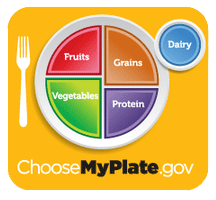The estimated societal costs of non-communicable chronic diseases caused by unhealthy diets, such as diabetes and cardiovascular disease, are now greater than those due to undernutrition in most regions of the world. Furthermore, according to a study in the Lancet Global Health, over the last two decades, global consumption of less healthy foods increased faster than consumption of healthy ones.
Increasing public awareness of the health effects of different food choices can play an important role in reducing overnutrition. Some existing public educational programs, such as the Kick the Can project, focus on the harmful effects of sugary drinks. Others, such as the International Year of the Pulses 2016 initiative, promote the consumption of specific nutritious foods such as pulses. A recent international review of nutritional education actions found that while public awareness campaigns that promoted certain foods or general healthy eating were more common than those that warned against certain foods, there was insufficient evidence to determine either type of campaign’s effectiveness.
This raises the question of how to design programs that more effectively steer consumers toward better dietary choices. To understand how consumers acquire knowledge and form opinions about products, marketing scientists and economists introduced the notion of a consideration set that describes how consumers may choose among multiple competing brands. A consumer is hypothesized to make a purchasing decision in two steps. First, the consumer selects a small number of brands to be seriously considered, and then the consumer makes the final selection from that set.
Can a similar process govern how consumers make food choices? A consumer may restrict his diet and food choices because of a product’s unavailability or inaccessibility; he may also unnecessarily restrict his diet because of the limited number of products that constitute his consideration set. Taking a public health perspective, when targeting consumers who restrict their attention to a small number of products, what nutritional aspects or which products should be the subject of public education campaigns?
In a recent article, “Optimal provision of information about consumption choices in the presence of a cognitive constraint,” published in Economics Letters, I analyze the model of a consumer who can learn about the risks and benefits of only a smaller sub-set of products, rather than the full range of products from which she can choose and consume. Such an attention-constrained consumer needs to decide whether to stay away from the products about which she is not fully informed (i.e., restrict her dietary diversity) and potentially miss some good choices or to take a gamble and consume a more diverse diet (potentially with the attending downside risks). The model shows that warning a consumer about a greater number of bad choices or recommending more good choices creates a trade-off. When the consumer knows more about bad choices and less about good choices, she makes fewer mistakes but may also miss some good choices. On the other hand, focusing more on positive recommendations means that the consumer includes more good products but may also include some inferior choices.
The article demonstrates that it is optimal to include more warnings about bad choices (and, respectively, less information about good choices) when consumers can afford and have access to a greater variety of products. This may explain why governments in developed countries tend to pursue educational campaigns with negative messages that warn consumers about the adverse effects of overconsumption of sugar and salt, while governments in developing countries emphasize positive messages with information about healthy food choices.







